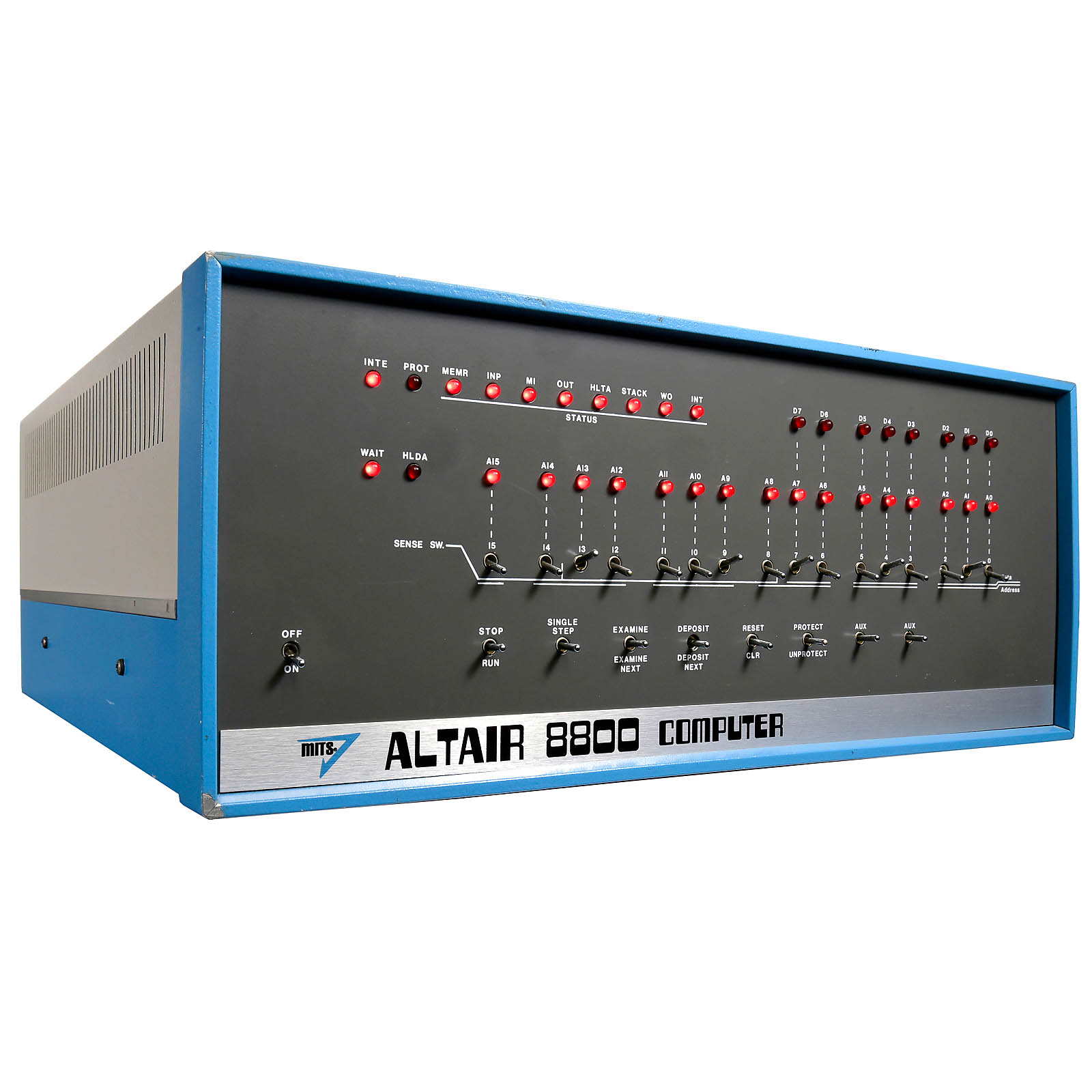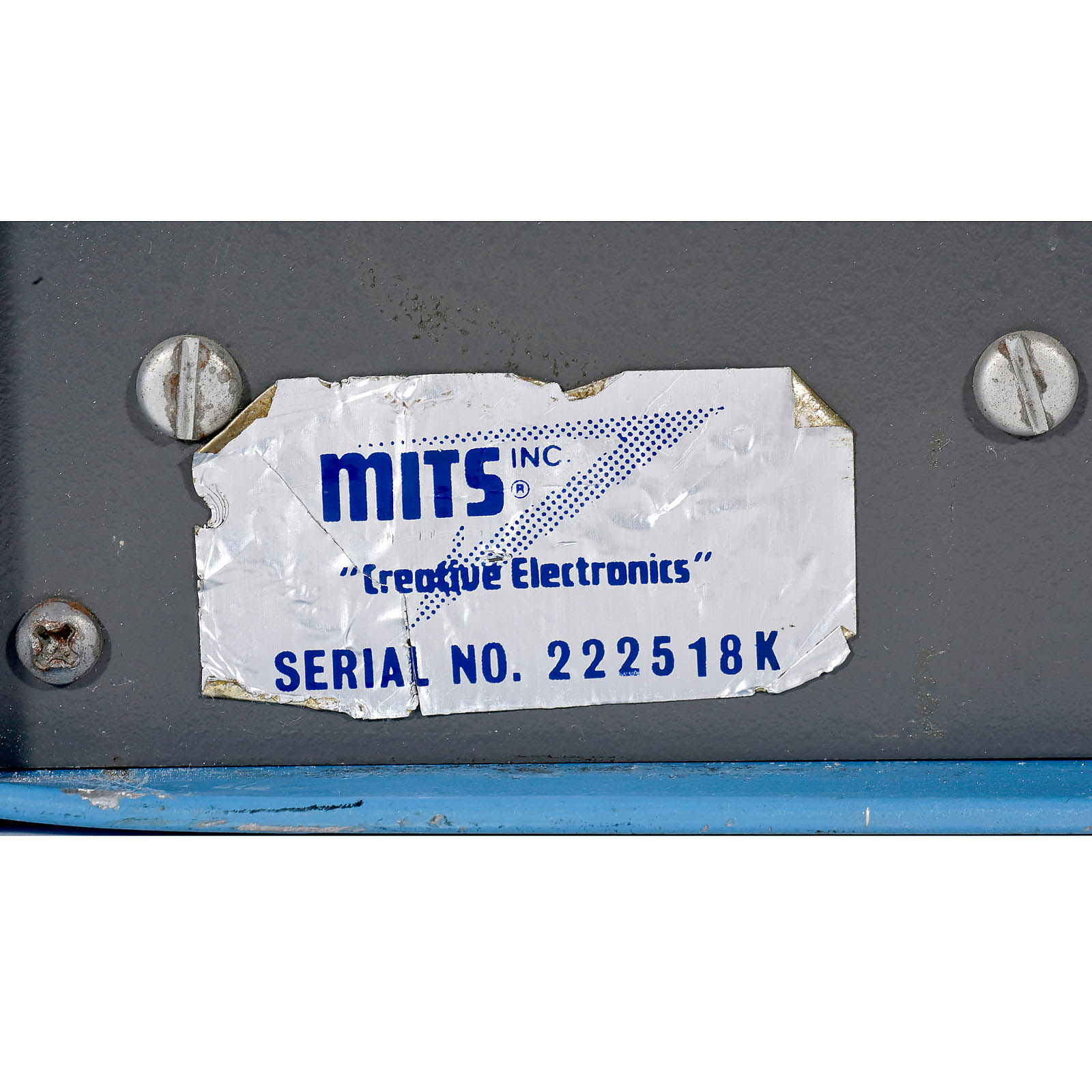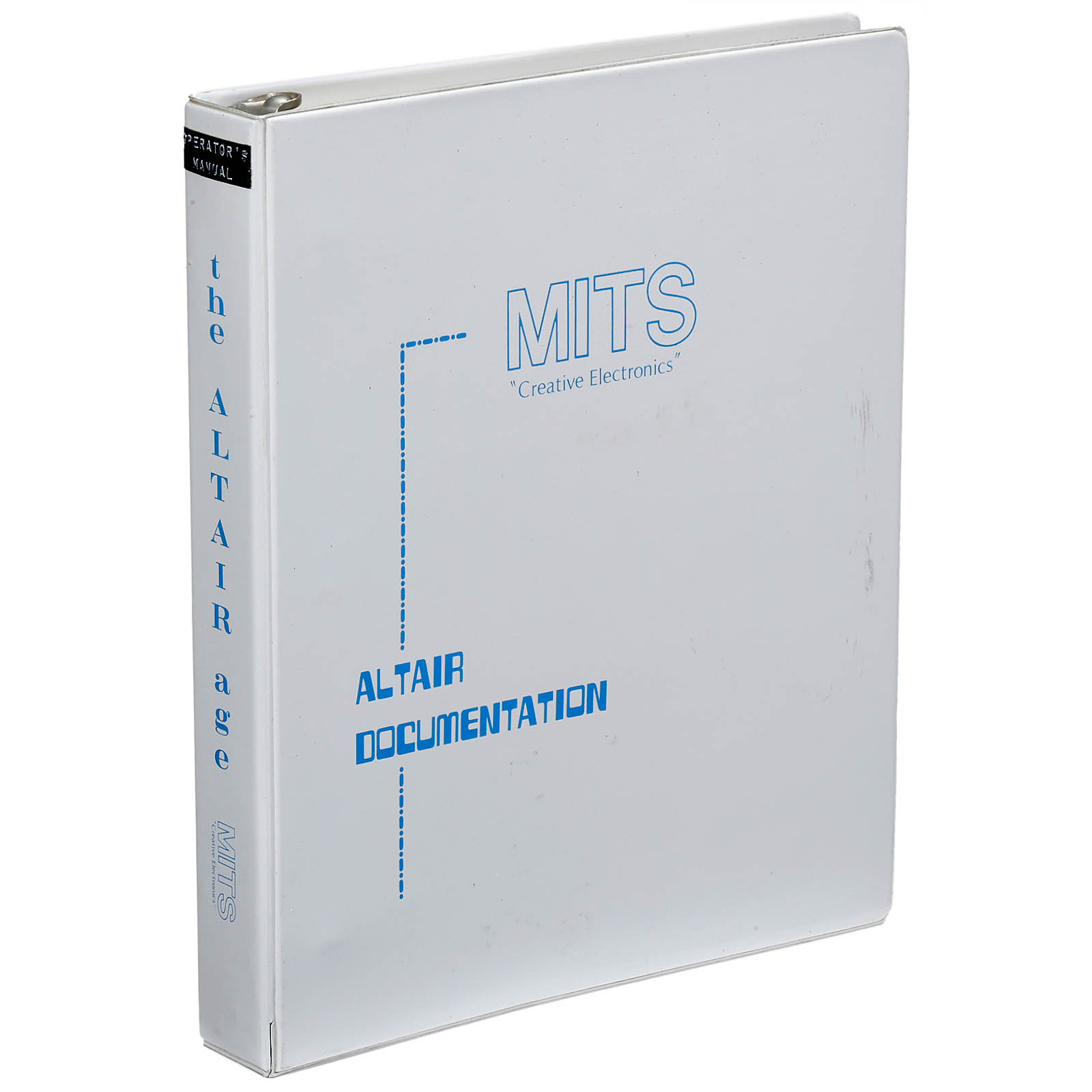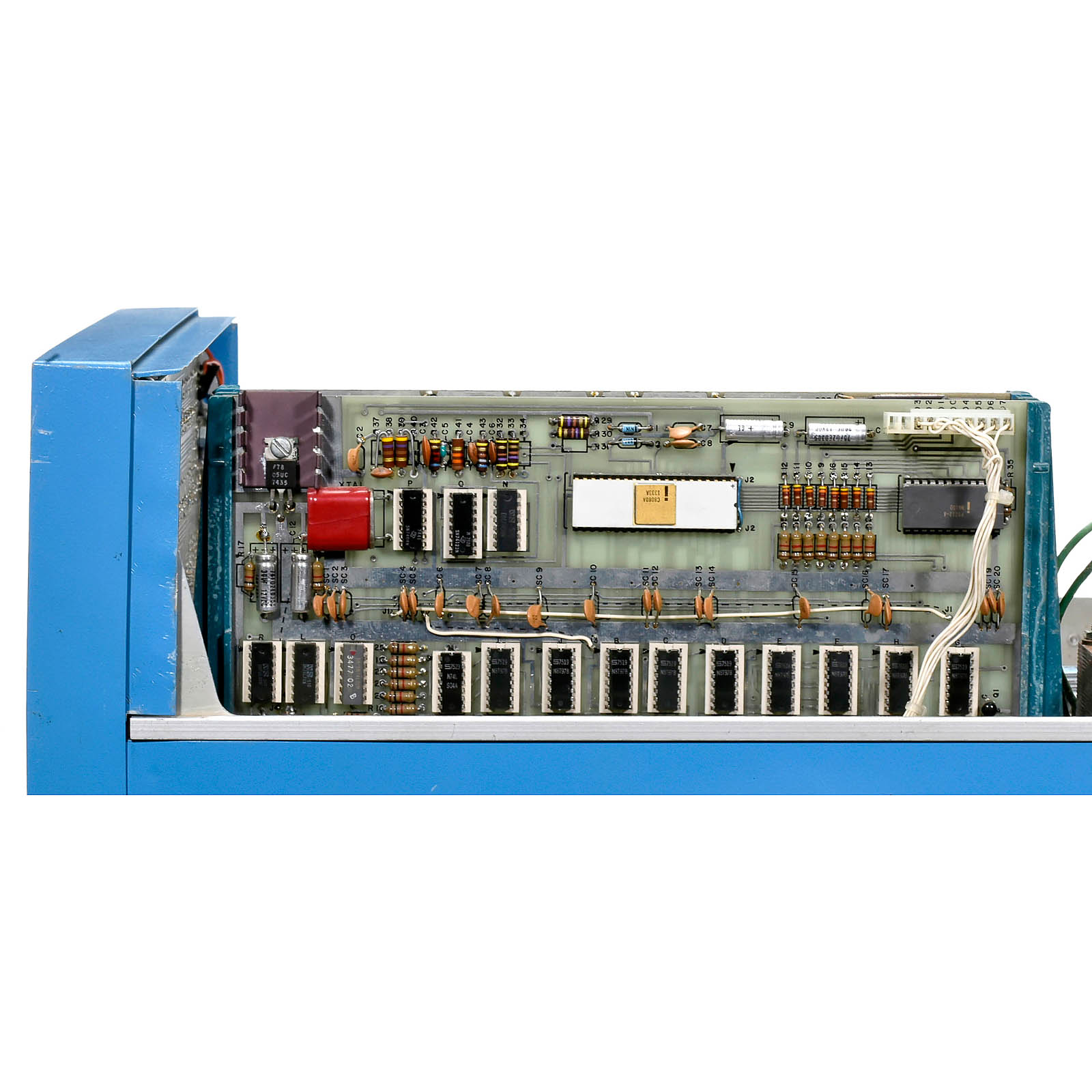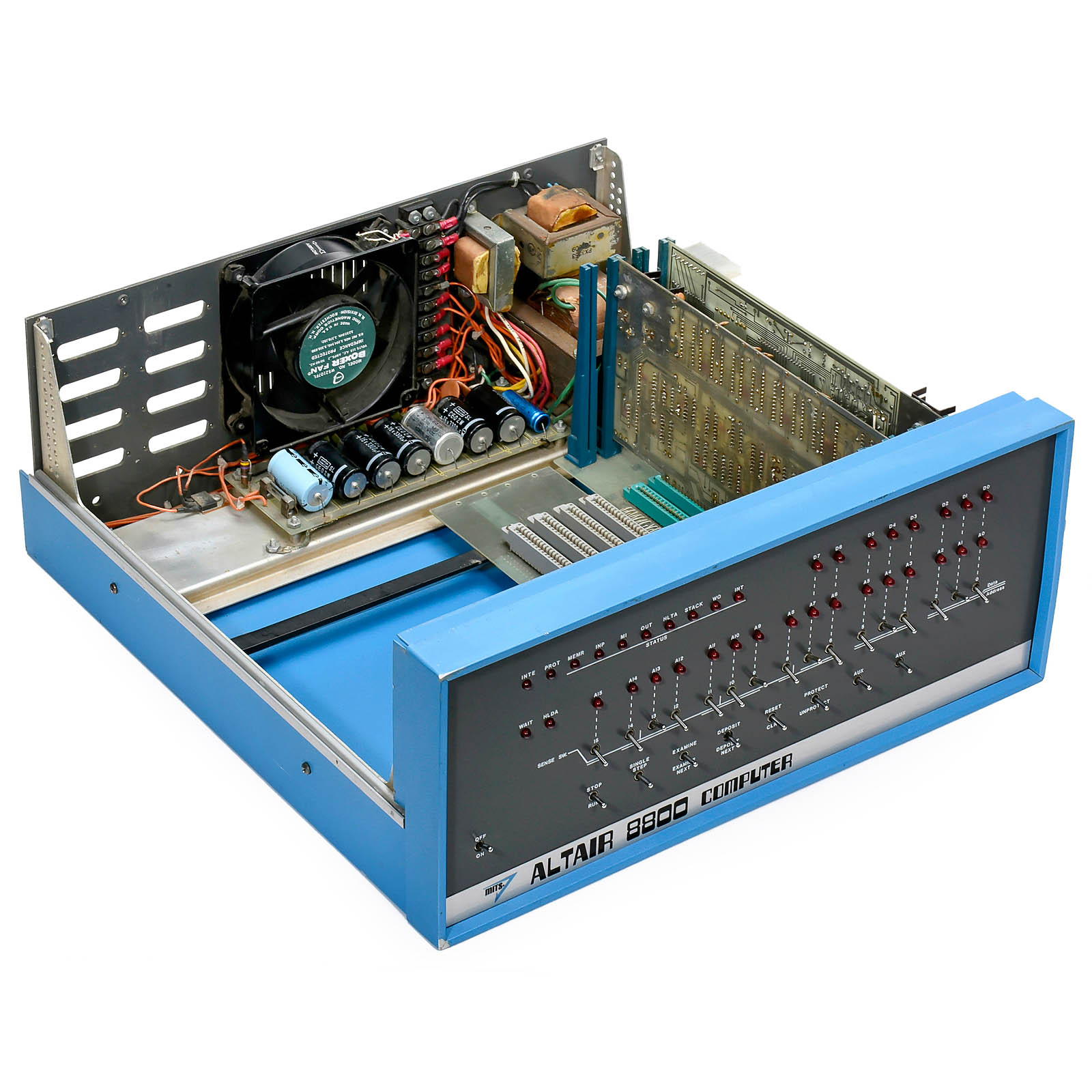29
MITS Altair 8800, 1974 The Altair was the first personal computer in the world to be offered in
134th Specialty Auction»Office Antiques | Science & Technology | Fine Toys & Automata«
Sale Date(s)
Venue Address
General delivery information available from the auctioneer
Local Pick-Up, In-House Shipping
Important Information
19.30 % buyer's premium on the hammer price
19.00 % VAT on buyer’s premium
Different tax regulations may apply, if the object is exported to a none-E.U. member country.
Terms & Conditions
Auction conditions
1) The auction is carried out voluntarily under foreign name and on account of the customer.
2) The goods to be sold in the auction can be and risk of the interested client. They will be put up for auction in the conditions as examined and checked at determined times before the auction – under the full responsibility they are without any liability for visible or hidden defects as well as for attributes; later claims of any kind cannot be taken into consideration. The description in the catalogues are made to the best of our knowledge, but they are no guaranteed attributes in the sense of § 459 and following BGB. – Information
ref. § 26 UStR is assured. – No right of return of any sold item, therefore please use the advantage of the
previewing (also by your friends).
3) Normally the bids are increased in steps of 10 % of the initial price with a minimum of € 5.–. The auctioneer can deviate from this regulation in particular cases. The knocking down is done if no higher offer is made after the third repetition of the highest offer and if the limit price has been achieved.
4) The auctioneer can combine numbers, separate them, can offer them out of the sequence or can withdraw them. The bidding is done by showing the bidding number or by a written offer.
5) The auctioneer can refuse an offer; in this case the offer given right before remains binding. In case several persons make the same offer, the knocking down is decided by lot. In case of identical written offers, the computer makes the decision to the benefit of the first offer received. Decisive in this case is the point of time of its entry. If there is a disagreement on a knocking down or if an offer is made in time has been disregarded, the auctioneer can all the same knock down this bid and can follow-up the rights resulting out of this. He can also knock down to the next lowest bid or can start again with the initial bid of this lot.
6) The knocking down is binding. The goods must be immediately paid. The knocking down transfers the risk of possible losses, damages, mistakes to the purchaser. Each bidder buys in his own name and for his own account.
7) A premium of 19,3 % has to be paid on the knocking down price. The tax (19 %) has to be paid on the surcharge, i.e. the total surcharge amounts to 22,97 %. The entire amount, which has to be paid by the purchaser, is immediately due and has either to be settled in cash, wire transfer or by guaranteed bank draft. In case of an acquisition by submittance of a written order, the payment has to be settled within 8 days after the invoice date.
8) The goods become the property of the purchaser only after the complete payment. The objects will only be delivered if the payment has been settled. Otherwise the goods are still the property of the consigner until complete payment. In case a payment does not reach the auctioneer in due time, the purchaser is liable without reminder for all resulting losses. Also without proof of a loss the interest for delay at the bank usual rate can be charged.
9) In case the payment is not settled in time or the objects are not taken, the auctioneer has the right either to demand the performance of the contract of purchase or can claim damages due to the non-performance. Independent from the above the auctioneer can also put this object for auction in one of the next auctions on cost of the purchaser. For the resale in the auction the bidder is treated as supplier and has to pay the corresponding order commission as well as the tax to be paid on it. All transportation and storing costs as well as possible charges for the employment of additional workers, which result in connection with the above, will be deducted from the net profits. The remaining profit will be balanced on the date of the actual inpayment with the
claim for damages acc. to § 367 BGB.
10) The handing over of the objects bought in the auction is done at any time during and after the auction against presentation of the receipt. Invoices issued immediately after the auction are subject to the right of verification and possible corrections: errors excepted. Bidders who are present at the auction must arrange the
pick-up on the day of the auction. Otherwise the objects will be stored on account and risk of the purchaser without any further notice. The auctioneer does not bear the risk of storing.
11) Each shipment is carried out on the account and risk of the purchaser C.O.D. Insurance possible on request. 12) Bidder orders are handled with great care; a guarantee for its setting up for auction can only be ensured if the written bidding order has reached the auctioneer latest at 12:00 am (noon) two days before the auction. The bidders un-known to the auctioneer are kindly asked to provide a satisfactory security before the auction.
13) The legal relation is based on the German law. Place of performance and legal venue for the mutual trade business is Cologne.
14) The visitor accepts the above conditions explicitly by his participation of the auction or by his offer.
Auction Team Breker
– Astrid & Uwe Breker –
Special notice:
Description of lots are supplemented by additional information (from/to) about usual prices on the international collectors’ market in order to provide a yardstick for any customers. The indicated dates are the years of market introduction of the specific models.
The “Breker-Scale” distinguishes between optical (external) and technical (functional) condition on a scale from 1 to 6 (“very good” to “deficient”) and is described in brackets as follows: (3/2), meaning: optical “3” (satisfactory) and technical “2” (good). The evaluation of condition is defined as follows:
1) very good (unused, no traces of use)
2) good (like new, slight traces of use)
3) satisfactory (normal traces of use)
4) sufficient (strong traces of use, immaterial parts added)
5) poor (defect, strong traces of use, important parts exchanged, needs repair)
6) deficient (totally defect, important parts missing, heavily damaged)
All these informations are worked out seriously but without any guarantee. Technical apparatus, cameras and lenses are offered as collectors’ items – without any guarantee for the mechanical or electrical function. We will
describe faults which we realized. We don’t check electrical machines, apparatus, batteries, photographical accessories (as lightmeters, rangefinders or selftimers etc.) – No right of return of any sold item, therefore please use the advantage of the previewing (also by your friends).
Telephone bids are possible for lots with limits of more than € 500.–, they have to be confirmed in written form up to the day before the auction 12 am. There is no guarantee for a real phone connection.
Auction participants and bidders must understand that purchase of the catalogue or Third Reich items may be done for educational purposes only. In order to repell unconstitutional movements they must be used only for art, science, research and teaching history or related subjects (§§ 86a, 86 StGB). Auction Team Breker as well as their auctioneers and consigners offer these items only under the above conditions. List of realized prices (Internet and next catalogue).











